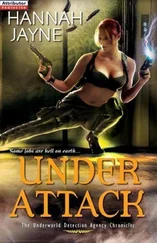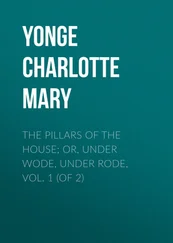Since the blitz, the picture of a mass of humanity sleeping in the tube, as portrayed by Henry Moore in his chalk drawings of underground shelters, has become one of its most iconic images, along with the dome of St Paul’s Cathedral wreathed in smoke during the raid on the City on 29 December 1940. Some accounts seem to suggest that the entire East End was nightly crammed into the underground. In reality a ‘shelter census’ of London’s central area at the height of the blitz showed that there were 177,000 people sheltering there – that is, around 4 per cent of London’s population, which compares with 9 per cent in public shelters and 27 per cent in Anderson shelters. One hundred and seventy-seven thousand is still a large number of people, but despite this large-scale colonisation, the government retained an equivocal attitude towards the tube being used for shelter.
In mid-September 1940 the Home Secretary, Sir John Anderson, accompanied by the Minister for Aircraft Production and newspaper magnate Lord Beaverbrook, and Lord Ashfield, chairman of the LPTB (who had previously expressed a preference for closing down the entire underground system) had visited Holborn tube station. They had talked to shelterers, many of whom from the East End were literally living down there, having been bombed out of their homes in the first raids. It was by now obvious that it was simply not possible to enforce a ban on the tube being used as shelters unless the authorities were prepared to risk a collapse of home-front morale and very ugly confrontations, with the police reinforced by the military barring station entrances and keeping angry and fearful people in the streets during a raid. The government grudgingly changed its policy, though it insisted that the underground was primarily for transport, and that shelterers must not interfere with that. But gradually some order and regulation – and some facilities – were introduced.
At the beginning of October 1940 Herbert Morrison replaced Sir John Anderson as Home Secretary and Minister of Home Security. The Home Secretary, the senior Secretary of State, was essentially responsible for law and order, whereas Home Security, a ministry canvassed at the time of Munich as a wartime essential and attached to the Home Office when war broke out, was in charge of all civil defence against air attack. This included responsibility for air-raid wardens, the firefighting services, first aid, decontamination and rescue squads, as well as facilities such as civil defence equipment and shelters, and arrangements concerned with blackout and air-raid warnings. Moreover, the Minister had to coordinate all those ministries that would be affected by air raids and their aftermath: Transport, Food and Health, among others. And soon Morrison would also be Chairman of what a Labour Party pamphlet described as ‘the Blitz Team’, the official title of which was the Civil Defence Committee of the War Cabinet, taking on an absolutely pivotal role in the prosecution of the war on the home front and the well-being of the people in acutely testing and hazardous times.
He was well placed to do so. The son of a Lambeth policeman, Morrison had left school at fourteen, and had been active first in the ILP (Independent Labour Party) and then the Labour Party. He had been a conscientious objector in the First World War, and in 1920 became Mayor of Hackney in east London, at thirty-two the youngest in London. Two years later he was elected to the London County Council (LCC), and in 1923 as Labour MP for South Hackney. Appointed Minister for Transport in the second Labour government from 1929 to 1931, he also led the LCC from 1934 until 1940, though he effectively abandoned this role when he was appointed Minister of Supply in May 1940. Morrison had a deep commitment to and knowledge of his native city – and undoubtedly more of a common touch than the rather grand and austere Anderson – and his time as an MP in Hackney had coincided with the borough’s notably energetic ARP activities. Before the war he had been a member of the ARP (Policy) Committee, and he would have seen the papers relating to the problems of future air raids.
Ritchie Calder was ecstatic at the appointment. In an open letter published in the Daily Herald he wrote:
Dear Herbert Morrison, When I heard you had been appointed Home Secretary I went home and slept soundly … I have seen men and women, these tough London workers of whom you and I are proud, whose homes have gone but whose courage is unbroken by the Nazi bombers, goaded by neglect and seething with resentment and furious reproach. THEY LOOK TO YOU … Much of the breakdown which has occurred in the last month could have been foreseen and avoided; or having arisen could have been mastered by anyone who understood the human problem of the Londoners and the complications of local government … you have a task as great as your abilities. Go to it Herbert …
Improving the shelters was only part of Morrison’s task: there were many other pressing administrative problems that needed urgent attention, but he made shelters a priority, though some changes were already in hand, with local authorities empowered to provide bunks, sanitation, drinking water and first aid, and to enrol voluntary shelter marshals, while a paid ARP warden would be assigned to each occupied tube station.
In the afternoon of 3 October 1940 the new Minister went to Buckingham Palace to kiss hands with the King and receive his seals of office. That done, Morrison set off to inspect shelters in south London, starting at Southwark tube station, where a raid was in progress and Ack-Ack guns were firing constantly as he and the inevitable retinue of journalists toured the non-facilities and spoke to shelterers. The next day it was the East End, where, accompanied by Admiral Sir Edward Evans in full dress uniform and wearing his medals and white gloves (Evans had been second in command to Captain Scott on his Antarctic expedition in 1910, but was always known as ‘Evans of the Broke’ , after the ship he had commanded in the First World War), one of the two Regional Commissioners for London, he headed straight for the notorious Tilbury shelter. After a quick tour of that wartime Hades, Morrison ordered structural improvements that would cost £5,000. ‘What does money matter?’ he exclaimed. ‘There are thousands of lives involved! Get it done at once!’ He had called in on the unfinished Bethnal Green tube station on the way, and on hearing that ‘at least 4,000 slept there nightly’, declared it an official ‘deep shelter’ sixty feet below the street.
Morrison immediately appointed the diminutive Labour MP ‘Red’ Ellen Wilkinson – so named for her ginger hair and her radical politics, which included leading hunger marchers from her shipbuilding constituency, Jarrow, to London in 1936, and who may have been Morrison’s mistress at one time – as one of his three Parliamentary Secretaries, and gave her direct responsibility for shelters. The appointment of this ‘dumpy, energetic little woman’ as Morrison’s ‘liaison between the shelters and his Whitehall desk’ pleased another critical journalist, Hilde Marchant of the Daily Express , who was now described as one of the newspaper’s two ‘Commissioners for the East End’. ‘I met [Wilkinson] several times in the shelters and Whitehall and liked her. She is direct and decisive, a busy vigorous woman who has impressed the men she works with, and she has got her practical hands firmly on the subject.’ Harold Nicolson, currently ensconced at the Ministry of Information, would also become a fan of Wilkinson’s ‘realism’. ‘She said to me: “You deal with ideas and one can never see how an idea works out. I deal in water closets and one can always see whether it works or not.” I do so like the little spitfire. I should so like to see [her and Florence Horsbrugh at the Ministry of Health] made Cabinet Ministers.’ Wilkinson turned out not only to have ‘nerves of fire and steel’ as she toured shelters all over Britain during the first months of the blitz, but a personal empathy with the shelterers: she had been bombed out of her flat in Guilford Street, not far from King’s Cross, in October 1940.
Читать дальше












